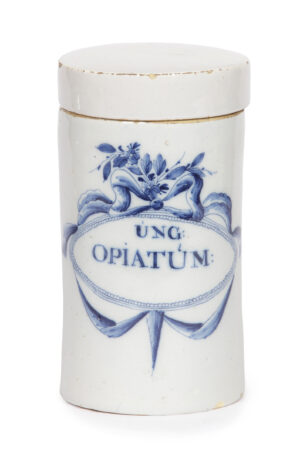![]()
Images on this website are licensed under a
Creative Commons Attribution-NoDerivs 3.0 Unported License.
OBJECT
D2413. Pair of Blue and White Kraak-Style Chargers
Delft, circa 1700
Painted in the center with a peacock next to a large blossom on the right and horizontal stripes on the left, within an octafoil medallion reserved with alternating panels painted in blue and meander motifs and surrounded on the cavetto and rim with eight fan-shaped panels depicting motifs of leaves and flowers, all separated by narrow panels of dots.
DIMENSIONS
Diameter: 39.7 cm. (15.6 in.)
PROVENANCE
French Private Collection, Paris, 2023
NOTE
Between approximately 1605 and 1635, the Dutch East India Company (VOC) primarily brought in Chinese porcelain referred to as ‘Kraakporselein’ to Holland, a term possibly derived from the Portuguese ships known as ‘caraccas.’ Notably, the early imports featured plates and dishes with foliated rims, crafted using molds and characterized by thin vessel walls to keep the weight minimal. This lightness was advantageous as the Chinese export tax was based on the object’s weight. The distinctive underglaze cobalt blue decoration consisted of alternating wide and narrow panels containing Tao symbols. The central panel often depicted landscapes or riverscapes with deer, birds, and large flowering plants.
Throughout the seventeenth century, Delft potters skillfully replicated Chinese Kraak-porcelain from the Wanli period (1573-1620) for both tableware and decorative items. The paneled border, a hallmark of Chinese Kraakwares, was meticulously imitated on Delft plates. The central design commonly featured urns of flowers, fruits, precious objects, animals such as peacocks, water birds, or deer, or even Chinese scenes. While seventeenth-century Delft plates and dishes in the Kraak style are relatively common, finding a charger of this size with delicate painting, molding, and a precise date is a rare occurrence.









